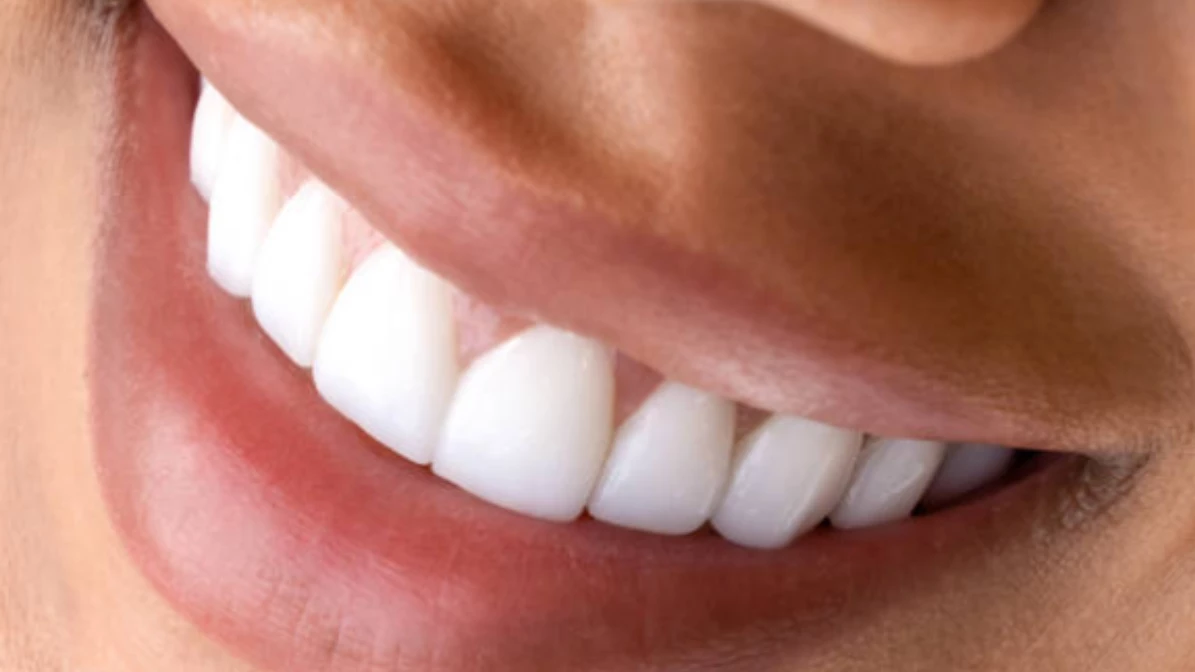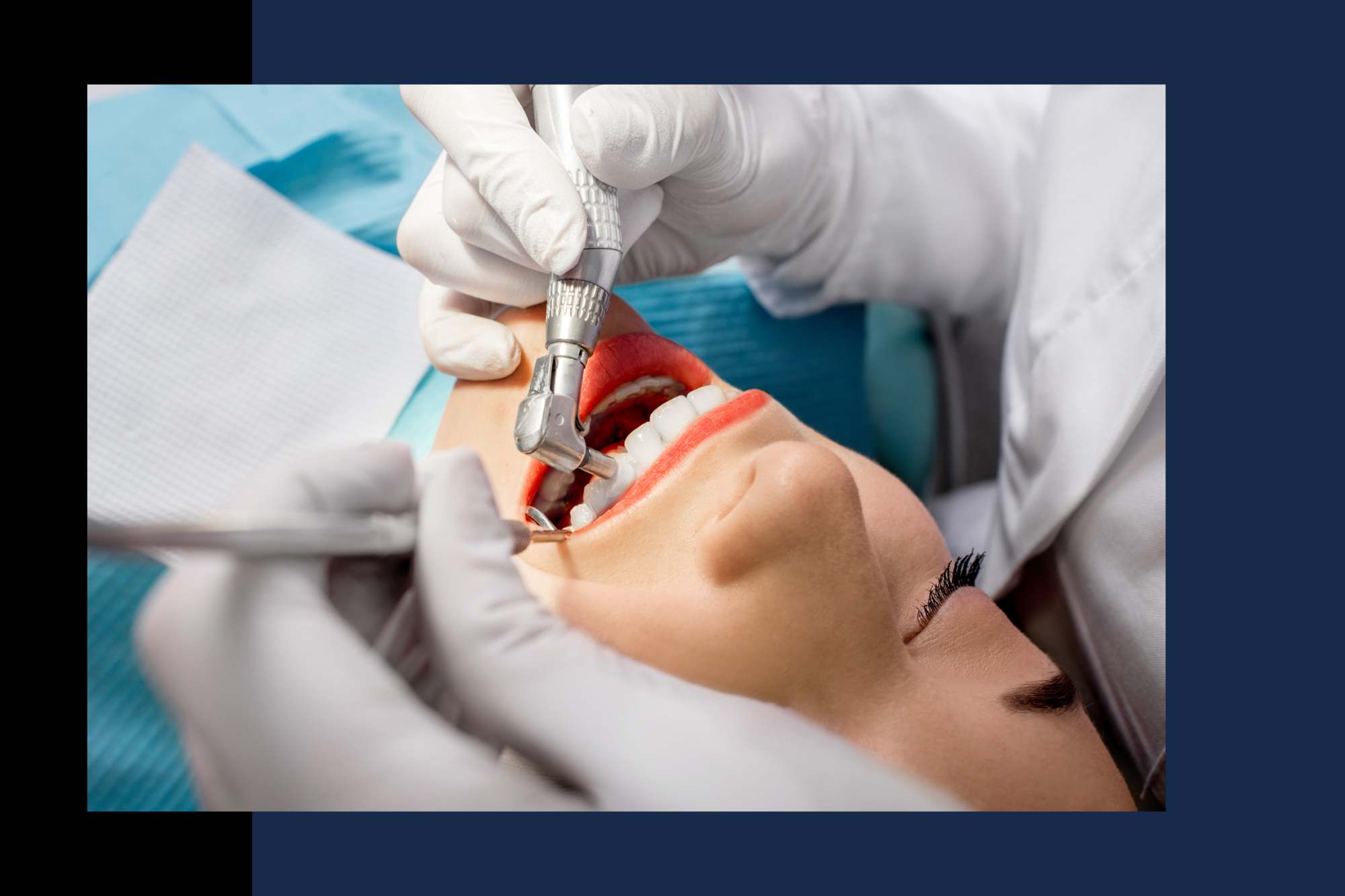SCHEDULE AN APPOINTMENT!
As a parent, you want your child to have the happiest and healthiest life possible. But when it comes to their oral health, sometimes cavities can get in the way of that. Fortunately, pediatric dentists specialize in diagnosing and treating oral issues like cavities in younger patients.
Today we’re talking about all things cavity filling – why they might be needed, what you can expect during treatment, and how pediatric dentistry helps make sure children smile brighter than ever!
At Keels Family & Cosmetic Dentistry, we understand the importance of preventive care for your child’s teeth. We offer various services to help prevent cavities and other common issues from poor oral hygiene. Our experienced staff is committed to providing top-notch dental care in a friendly and comfortable environment.
We are well-equipped to handle your child’s dental needs, from regular check-ups to cavity fillings. We take the time to explain procedures and answer any questions you may have about our services. We aim to ensure your child has a positive experience at the dentist.
We also offer pediatric sealants, fluoride treatments, and other preventive measures to help keep your child’s teeth healthy and strong. We are dedicated to helping your child maintain a bright, beautiful smile for years and beyond.
If you are looking for high-quality pediatric cavity fillings in Duncan, SC and nearby areas, look no further than Keels. Our team is here to provide the best dental care possible and ensure your child’s teeth stay healthy and strong. Contact us today for more information or to schedule
Composite Fillings
Composite fillings have revolutionized dentistry by offering a superior alternative to traditional amalgam fillings. This modern approach to dental restoration ensures the preservation of natural tooth structure and provides aesthetically pleasing results.
Composition of Composite Fillings: What is a Composite Dental Filling Made Of?
Composite fillings are made from resin and finely ground glass particles. This mixture forms a tooth-colored material that blends seamlessly with the natural tooth enamel. The composite resin is highly customizable, allowing dentists to match the shade of the filling to the patient’s teeth, making it virtually indistinguishable.
Advantages & Disadvantages of Composite Fillings
Advantages
- Aesthetic Appeal: Composite fillings are tooth-colored, making them an excellent choice for visible teeth. They blend in naturally with the surrounding tooth structure, providing a seamless and aesthetically pleasing restoration.
- Preservation of Tooth Structure: Composite fillings require minimal removal of the natural tooth structure compared to amalgam fillings. The bonding process allows for a more conservative approach, ensuring the preservation of healthy tooth enamel.
- Versatility: Composite fillings can be used to restore both the front and back teeth, offering versatility in dental restorations. They can repair cavities, chipped teeth, and even reshape uneven or worn teeth.
- Bonding Strength: Composite fillings bond directly to the tooth enamel, which enhances their strength and durability. This bonding process also helps to prevent further decay and strengthens the tooth structure.
Disadvantages
Pediatric composite cavity fillings have become a popular option for restoring decayed teeth in children due to their aesthetic appeal and ability to bond directly to the tooth structure.
However, like any dental treatment, they also have some disadvantages. Here are some potential drawbacks of pediatric composite cavity fillings:
- Cost: Composite fillings tend to be more expensive than traditional amalgam fillings. While they offer better aesthetics and bonding capabilities, the higher cost may be a concern for some families, especially those without adequate dental insurance coverage.
- Technique sensitivity: Placing composite fillings requires more meticulous and precise techniques compared to amalgam fillings. Proper isolation and moisture control are essential during the procedure to ensure the longevity of the filling. If not done correctly, it may lead to complications such as premature failure or recurrent decay.
- Durability: While composite fillings have improved in terms of durability over the years, they are still generally less durable than amalgam fillings, especially in high-stress areas like molars. Children, particularly those with poor oral hygiene habits, may experience earlier wear or chipping of composite fillings.
- Time-consuming: The placement of composite fillings typically takes longer compared to amalgam fillings. The dentist needs to layer and cure the composite material in small increments, which can prolong the treatment time, especially for younger patients with shorter attention spans.
- Post-operative sensitivity: Some children may experience tooth sensitivity after getting composite fillings. This sensitivity could be temporary, but it may cause discomfort and could require additional follow-up visits.
- Limited insurance coverage: Not all dental insurance plans cover the full cost of composite fillings, and some may only partially cover the expenses. This can pose a financial burden for families who prefer composite fillings but have limited insurance coverage.
- Color stability: Although composite fillings can be matched to the natural color of the teeth, they may gradually discolor over time due to exposure to various substances like coffee, tea, and tobacco. This can affect the aesthetics of the filling and require replacement sooner than expected.
- Bulkier restorations: Composite fillings require more tooth structure removal to create the necessary space for the material. In cases of extensive decay, this may lead to larger restorations, potentially weakening the tooth and increasing the risk of fractures.
- Allergic reactions: In rare cases, some children may be sensitive or allergic to the components of composite materials. Dentists need to consider alternative materials for such individuals.
It’s important to note that while there are disadvantages to composite cavity fillings, they are still a popular choice due to their aesthetic benefits and conservative preparation, making them suitable for many pediatric patients.

Longevity and Care: How Long Do Composite Fillings Last?
Composite fillings are super tough and can stick around for years if you take good care of them. So, make sure to brush, floss, and go for those dentist cleanings to keep your pearly whites in top-notch shape. If you want to keep your composite fillings in tip-top shape for longer, try not to bite on hard stuff or use your teeth as tools. Trust us, it’ll help them last much longer!
Composite fillings have emerged as a modern and versatile solution for dental restorations. Their ability to preserve natural tooth structure, aesthetic appeal, and durability has become a preferred choice for many patients. If you think that your child require a dental filling, consult with us to determine if composite fillings are the right option
How Long Does A Composite Dental Filling Procedure Take?
The duration of a pediatric composite dental filling procedure can vary depending on several factors, including the size and location of the cavity, the child’s cooperation and behavior, the dentist’s experience, and the complexity of the case. However, on average, a pediatric composite filling procedure typically takes around 20 to 60 minutes.
Here’s a breakdown of the general steps involved in a composite dental filling procedure:
- Preparation: The dentist will begin by numbing the area around the affected tooth using a local anesthetic to ensure the child’s comfort during the procedure.
- Tooth Preparation: The decayed or damaged part of the tooth will be removed using a dental drill. The dentist will create a clean and suitable space for the filling material.
- Etching and Bonding: The dentist will apply an acid gel to the prepared tooth surface to create small grooves that help the composite filling material adhere better. Afterward, a bonding agent is applied to further enhance the bond between the tooth and the filling.
- Filling Placement: The dentist will carefully place the composite resin material in layers into the prepared cavity. Each layer is typically hardened using a special light to make the filling durable.
- Shaping and Polishing: Once the tooth is fully filled, the dentist will shape the composite material to match the natural contours of the tooth. Afterward, the filling is polished to provide a smooth and natural appearance.
The actual time taken for each step can vary, and if the cavity is large or if there are multiple cavities to be filled, the procedure may take longer. Additionally, some children may require breaks or extra time to ensure their comfort and cooperation during the process.
Pediatric Composite Dental Fillings Repair & Replacement
Pediatric composite dental fillings repair and replacement may be necessary in several situations. Composite fillings are tooth-colored restorations used to repair small to moderate cavities in children’s teeth. Over time, these fillings can wear out or become damaged due to various factors.
Here are some common reasons why repair or replacement may be needed:
- Cavity Recurrence: If a new cavity forms around or underneath an existing composite filling, it will require repair or replacement to address the new decay.
- Filling Damage: Composite fillings can chip, crack, or wear down over time due to chewing forces or accidental trauma. When damage occurs, it’s essential to repair or replace the filling to prevent further problems.
- Filling Discoloration: Composite fillings can become stained or discolored over time, affecting the appearance of the tooth. In such cases, a new filling can be placed to improve the aesthetics.
- Filling Marginal Breakdown: The edges or margins of a filling can wear away or deteriorate, creating gaps between the filling and the tooth. These gaps can allow bacteria to enter and cause new decay, requiring repair or replacement.
- Tooth Fracture: If the tooth structure around the composite filling fractures or breaks, the filling may need to be replaced to restore the tooth’s integrity.
- Allergic Reactions: In rare cases, a child may have an allergic reaction to the materials used in the composite filling. If an allergic response occurs, the filling will need to be replaced with an alternative material.
- Worn-out Fillings: As children grow, their teeth and jaws change. Older fillings may not align with the new bite, leading to premature wear or discomfort. Replacing the filling can help address these issues.
- Large Filling Replacements: If the original filling was extensive and has reached the end of its lifespan, a replacement may be necessary to maintain the tooth’s strength and function.
Our dentists will assess the fillings’ condition and recommend appropriate treatment based on the specific needs of the child’s teeth. Early intervention can prevent more extensive dental problems and maintain good oral health for the child.
Ceramic Fillings
When it comes to pediatric dentistry, the use of composite fillings has gained significant popularity. Composite fillings offer a gentle and effective solution for restoring children’s teeth affected by cavities or minor damage.
When it comes to dental care, it’s important to prioritize both functionality and aesthetics. If you have ceramic tooth fillings that are worn out, damaged, or simply not meeting your expectations, it’s time to consider getting them repaired or replaced. In this article, we will explore the benefits of ceramic tooth fillings and why repairing or replacing them can be a game-changer for your oral health and smile.
Ceramic Tooth Fillings Repair & Replacement
Ceramic tooth fillings, also known as porcelain fillings, have gained popularity in recent years due to their durability and natural appearance. These fillings are made from a tooth-colored material that blends seamlessly with your natural teeth, making them virtually undetectable.
Unlike traditional silver amalgam fillings, ceramic fillings provide a more aesthetically pleasing option for restoring decayed or damaged teeth.
Signs That Your Ceramic Tooth Fillings Need Attention
Over time, ceramic fillings can experience wear and tear due to factors such as chewing forces, teeth grinding, or even accidents. Here are a few signs that indicate it might be time to repair or replace your ceramic tooth fillings:
- Discoloration: If you notice any discoloration on your ceramic fillings, it could be a sign of deterioration or staining.
- Fractures or Chips: Cracks or chips in your fillings can compromise their integrity and increase the risk of further damage to your teeth.
- Sensitivity: Increased sensitivity around the filled tooth might indicate that the filling has become loose or is no longer properly sealing the affected area.
Benefits of Repairing or Replacing Ceramic Tooth Fillings
- Enhanced Aesthetics: Repairing or replacing worn-out ceramic fillings will restore the natural appearance of your teeth, boosting your confidence and allowing you to smile without hesitation.
- Improved Functionality: Damaged fillings can affect your ability to chew properly, leading to discomfort or even pain. By repairing or replacing them, you can regain full functionality and enjoy your favorite foods without limitations.
- Long-lasting Results: Investing in the repair or replacement of ceramic fillings ensures the longevity of your dental work, minimizing the need for frequent repairs in the future.
Consultation with a Dental Professional
Repairing or replacing ceramic tooth fillings should always be done by a qualified dental professional. They will carefully assess the condition of your fillings and recommend professional help. Together with your dentist, you can restore both the functionality and aesthetics of your teeth, allowing you to enjoy a confident smile once again.
Difference Between Ceramic & Composite Dental Fillings
Ceramic and composite dental fillings are two common materials used to restore teeth damaged by cavities or decay. They have distinct characteristics and advantages, which are worth considering when choosing the right filling material for your dental needs.
Here are the key differences between ceramic and composite dental fillings:
Composition
- Ceramic Fillings: Also known as porcelain fillings, ceramic fillings are made from a type of dental ceramic material. They are tooth-colored and designed to closely match the natural appearance of your teeth.
- Composite Fillings: Composite fillings are made of a mixture of glass or quartz filler particles and an acrylic resin. Like ceramic fillings, they can also be color-matched to your natural teeth, providing a more aesthetic appearance.
Aesthetics
- Ceramic Fillings: Ceramic fillings are highly aesthetic and can blend seamlessly with your natural teeth due to their tooth-colored appearance. This makes them an excellent choice for visible areas of the mouth.
- Composite Fillings: Similarly, composite fillings are tooth-colored and blend well with your natural teeth, making them suitable for front and back teeth.
Durability
- Ceramic Fillings: Ceramic fillings are relatively durable and resistant to wear, making them suitable for small to medium-sized cavities in areas that experience moderate chewing forces.
- Composite Fillings: While composite fillings are reasonably durable, they may not be as strong as ceramic fillings. They are best suited for small to medium-sized cavities in low to moderate chewing force areas.
Application
- Ceramic Fillings: The placement of ceramic fillings usually requires more than one visit to the dentist. The dentist will take impressions of your tooth to create a custom filling in a dental laboratory, and then bond it to your tooth during the second visit.
- Composite Fillings: Composite fillings can often be placed in a single dental visit. The dentist will apply the composite material directly to the cavity and sculpt it to the desired shape before curing it with a special light.
Bonding Strength
- Ceramic Fillings: Ceramic fillings generally have good bonding strength to the tooth structure, providing reliable restoration and support to the remaining tooth.
- Composite Fillings: Composite fillings bond well to the tooth structure, which can also help strengthen the tooth and reduce the risk of fractures.
Cost
- Ceramic Fillings: Ceramic fillings tend to be more expensive than composite fillings due to the extra laboratory work involved in their fabrication.
- Composite Fillings: Composite fillings are generally more cost-effective compared to ceramic fillings.
Ultimately, the choice between ceramic and composite fillings will depend on various factors, including the size and location of the cavity, aesthetic considerations, budget constraints, and the dentist’s recommendation. Both materials offer valuable benefits and are widely used in modern dental practices to restore and preserve dental health.
Pricing
When it comes to pricing, it’s important to note that the cost of ceramic tooth fillings can vary depending on several factors. These factors include the location of the dental clinic, the complexity of the procedure, and the size of the filling needed.
On average, you can expect to pay between $250 to $500 per tooth for ceramic tooth fillings. Keep in mind that this is just a general range and prices can vary from dentist to dentist. Some clinics may charge higher fees due to their expertise or location.
It’s worth mentioning that dental insurance may cover a portion of the cost for ceramic tooth fillings. However, coverage amounts and policies can vary, so it’s always a good idea to check with your insurance provider beforehand.
While ceramic tooth fillings may be more expensive than other types of fillings, they offer several advantages. Besides their natural appearance, they are resistant to staining, provide strong structural support, and can last for many years with proper care.
Can You Eat Solid Food After A Ceramic Dental Fillings?
Yes, you can generally eat solid food after getting ceramic dental fillings. Dental fillings, including ceramic ones, are designed to restore the structure and function of a tooth that has been damaged by decay or other factors.
How Long Does It Take To Fully Heal After A Ceramic Filling?
The healing process after a ceramic filling is relatively quick. After the procedure, you may experience some sensitivity in the tooth for a few days, but this should subside relatively quickly. Most people can resume their normal activities and eat normally within a few hours after getting a ceramic filling.
It’s important to note that the term “healing” might be a bit misleading when it comes to dental fillings. Unlike injuries or surgeries where tissues need time to regenerate and repair, a dental filling is a restorative procedure where the damaged tooth structure is replaced with a ceramic material. The tooth itself doesn’t “heal” like the body heals from a wound; instead, the tooth is restored to its function and shape.
If you experience any persistent pain, discomfort, or sensitivity long after getting a ceramic filling, it’s essential to contact your dentist as this could be an indication of potential issues with the filling or the tooth.
How To Care For Your Ceramic Dental Filling
- Maintain Good Oral Hygiene Proper oral hygiene is the first step in caring for any dental work, including ceramic fillings. Brush your teeth at least twice a day with a soft-bristled toothbrush and fluoride toothpaste. Don’t forget to floss daily to remove plaque and food particles from between your teeth and around the filling.
- Avoid Staining Agents Ceramic fillings are highly resistant to staining, but it’s still advisable to avoid certain stain-causing substances. Limit your consumption of coffee, tea, red wine, and other beverages known for their staining properties. If you do indulge, rinse your mouth with water afterward or use a straw to minimize contact with your teeth.
- Opt for Tooth-Friendly Foods A healthy diet plays a crucial role in maintaining oral health. Opt for tooth-friendly foods such as fruits, vegetables, lean proteins, and dairy products. These foods not only contribute to overall well-being but also help protect your dental filling from damage.
- Steer Clear of Hard or Sticky Foods While ceramic fillings are durable, it’s best to avoid excessively hard or sticky foods that can potentially damage or dislodge the filling. Be cautious when biting into hard candies, nuts, ice cubes, or using your teeth as tools. Cut food into smaller pieces if necessary to minimize stress on the filling.
- Wear a Mouthguard If you participate in contact sports or grind your teeth while sleeping (bruxism), consider wearing a custom-fitted mouthguard. This protective gear can help prevent accidental damage to your ceramic dental filling and safeguard your overall dental health.
- Schedule Regular Dental Check-ups Regular visits to your dentist are essential for maintaining the health and longevity of your dental filling. Your dentist will monitor the condition of the filling, ensure proper fit, and address any emerging issues early on. Remember, prevention is always better than cure!
Caring for your ceramic dental filling doesn’t require a lot of effort, but it’s crucial to follow a few simple guidelines to ensure its longevity. By following these simple tips, you can ensure that your ceramic dental fillings stay strong, durable, and aesthetically pleasing for years to come.
Remember, good oral hygiene, a cautious approach to eating habits, and regular dental check-ups are key to maintaining a healthy smile.
Are Ceramic Dental Fillings Permanent?
Ceramic dental fillings, also known as porcelain or tooth-colored fillings, are designed to be a long-lasting dental restoration option. While they are not considered permanent in the sense that they will last forever, they are durable and can last for many years with proper care and maintenance.
The lifespan of ceramic dental fillings can vary depending on factors such as the size and location of the filling, the individual’s oral hygiene practices, their diet, and the forces applied to the teeth during daily activities like chewing. On average, ceramic fillings can last anywhere from 5 to 15 years or even longer in some cases.
At Keels Family & Cosmetic Dentistry, we strive to provide the highest quality of care for your child’s dental needs and ensure that their experience is comfortable and pleasant.
Why Choose Keels Family & Cosmetic Dentistry?
Make An Appointment
At Keels Family & Cosmetic Dentistry, we understand that people choose our practice for a multitude of reasons. Our prime location offers convenience to our valued patients, making it easy to schedule appointments and prioritize their oral health. The trust and satisfaction of our patients, who often refer friends and family, have solidified our reputation as a professional and caring dental office within our community. Our comprehensive services range from cosmetic dentistry to dental care for the entire family, ensuring that we meet the unique needs of every member. We work with various dental insurance plans to make quality care accessible. With flexible scheduling, a warm and welcoming atmosphere, state-of-the-art technology, and a commitment to patient education, we aim to provide not just dental services but also a comfortable and personalized experience. At Keels Family & Cosmetic Dentistry, we prioritize the health and well-being of our patients above all else, fostering a strong personal connection with each individual who walks through our doors.



